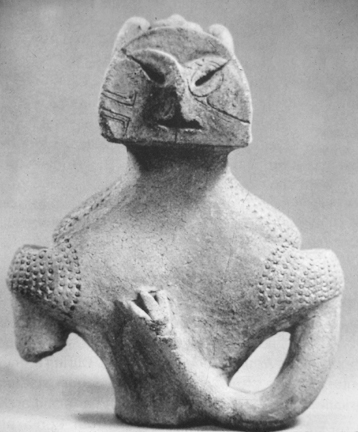
JOMON DOGU, JAPAN,
Neolithic (approximately 2000 BCE)
ART 198 - HISTORY OF WORLD CERAMICS
| The Jomon also used clay to fashion small human effigy figures, called Dogu. Dogu are never fully realistic and instead present the human figure distorted into fantastic shapes. The figures usually have large heads, small arms and hands, and compact bodies. This example has large, slit eyes and marks on the shoulders and neck that indicate tatooing. Their exact purpose remains elusive, but many scholars believe that they were effigies representing the owner or another person, and through sympathetic magic, that illness or misfortune could be transferred to the dogu. The dogu would then be broken to cure the illness or dispel the bad luck. Most dogu figures that have been found were deliberately broken, as in this example, lending support to this theory. | JOMON DOGU, JAPAN, Neolithic (approximately 2000 BCE) |
|
|